UT Dallas CS Students Share their Summer Adventures Including Winning Hackthons and Being Invited to Attend Prestigious ACM Conferences

This summer, many of our UT Dallas Computer Science students have been off doing exciting activities ranging from internships, working on hobby projects, to even attending international conferences and competing in Hackathons. We recently spoke with two students, Rahul Sonwalkar and Yuan Tian, about their exciting summer activities. Below are two of their stories, personally written by each student, about what they did this summer.
UT Dallas CS Sophomore, Rahul Sonwalkar, and his fellow UT Dallas CS teammates, Kota Tejaswi, Sandeep Namburi, decided to compete in the 2017 Sabre Hackathon in Las Vegas, Nevada held this summer. Their hack, Flyo, ended up winning first place. We asked him to write about his experience competing in a national hackathon with his friends.

This summer, my team, consisting of Kota Tejaswi, Sandeep Namburi, and myself, had the pleasure of competing in and winning first place at the 2017 Sabre Hackathon in Las Vegas, Nevada. We all are currently Computer Science Sophomores at UT Dallas.
We initially heard about the Sabre Hackathon through an email that Dr. Jey Veerasamy sent out to all ECS students. He encouraged all students to attend the hackathon for the experience and offered to cover some of the travel expenses. We all agreed that this would be a great learning opportunity for all us to experience.
It was memorable to attend a hackathon at one of the best casinos and hotels in Las Vegas. During the Sabre hackathon, we got to work on a very common problem – creating and sharing travel plans with your friends. The goal was to create an application that would make it convenient for users to create and share travel plans with their friends.
Sabre, the organizer of the hackathon, had some powerful APIs for travel services that they wanted the hackers to incorporate into their Apps. During the hackathon, Sabre made available a large team of engineers to help the hackers get started with using Sabre’s technology. Many of the engineers stayed up all night with the hackers to assist with bug fixes.
One of my teammates, Sandeep Namburi, thought it would be very cool to integrate those APIs into an Amazon Echo device. Consequently, our team’s hack was Flyo, which we built on Amazon Alexa, that enables users to make travel plans with their friends in a hands-free way. Flyo’s cool factor is its convenience; you can look up cheap flights, hotels, concert tickets, and baseball/football tickets and share them with your friends as you are cooking, reading a novel, or playing with your kids.
The entire process of coming up with a cool idea and building it in 24 hours serves as an amazing learning experience for any CS student. We would urge future students to similarly take advantage of future hackathons as a means towards developing a well-rounded computer science education.
Yuan Tian, Ph.D. Candidate, Selected to attend the ACM’s Celebration of 50 Years of the A.M. Turing Award Conference.

This past June, Yuan Tian, a Ph.D. candidate supervised by Dr. B. Prabhakaran, was recently selected to attend the ACM’s Celebration of 50 Years of the A.M. Turing Award Conference in San Francisco. We asked him to write about what he experienced at the conference.
Last June, I had the opportunity to attend the “Nobel Prize of Computing” – ACM Turing Award 50 years Celebration Conference, which was held at the Westin St. Francis Hotel in San Francisco, California. In order to afford select students to attend the conference, one of the ACM SIG sponsors, SIG MM (Special Interest Groups – Multimedia), had selected ten student scholars internationally as conference scholarship recipients. I was honored and humbled to have been chosen as one of those recipients.
During the two-day celebration of the ACM Turing 50 conference, I was very excited to be provided with the opportunity to interact with the Turing Award laureates and other professionals and listen to their stories and be inspired by their conversations.
When thinking back to the first two days of the conference, one of the most memorable moments happened during the opening remarks by ACM president Vicki Hanson. After the introduction of SIG sponsors and supporters, she said: “I’d also like to mention that the sponsorship and support of the SIGs helped to make it possible to fund the attendance of the student scholars to this conference. So would those student scholars, please stand up.” With the applause from the audience, I stood up with the other student scholars. At that moment, I was very proud that I was one of the chosen scholars from the University of Texas at Dallas, and felt a real commitment and dedication towards contributing to society with my research.
After the opening remarks, the conference hosted two Turing laureate speeches and seven panels. I especially enjoyed the panel discussions, which involved panelists that included at least one Turing laureate. Each panel focused on cutting-edge trending topics where each of the panelists stated their points, argued with each other, and answered the audience’s questions. I learned much from these panels and in particular the topics: “Advances in Deep Neural Networks” and “Quantum Computing.” With their tremendous performance and potentials, deep neural networks are no doubt to going be one of the hottest research topic going forward. In the course of this panel discussion, the panelists split into two groups; one that believed that these methods are the future of AI and the other who believes that these are only good techniques, which have been given too much attention. Since I am currently investigating the usage of deep neural networks for application to multimedia data analysis, I was greatly inspired by their conversation and the huge amount of information they brought forward. This panel helped me to understand the advantages and problems associated with deep neural networks. I also enjoyed the panel on quantum computing, which is one of the evolving directions of the future computer hardware. I was very excited to learn that some universities, as well as research institutions such as IBM research, now provide testbed platforms to the public. I believe that every researcher needs to stay abreast of the development of quantum computing since research on algorithms is moving briskly.

In addition, the conference provided many opportunities to facilitate interactions between scholars and Turing laureates. During lunch and celebration receptions, I was free to pick a seat and talk with my favorite laureates and experienced researchers. I was lucky to chat with some of my “heroes” such as Turing laureates, Drs. Donald E. Knuth, Qizhi Yao, and ACM SIGgraph President, Dr. Jeff Jortner.
After the main conference, there was a laureate session, which I had been looking forward to for some time. The session included many small groups, with each group consisting of two or three Turing laureates and several young scholars. The purpose of the session was to stimulate and inspire the young scholars through their conversation with laureates. I was excited to join the group with Drs. Ivan Sutherland (the father of computer graphics) and Frederick Phillips Brooks, Jr. (one of the founders of computer architecture and software engineering) to discuss VR, AR, and graphics. During the session, both laureates kindly answered questions and shared interesting stories in computing history, which greatly inspired me. One of the questions I asked of Dr. Fred Brooks was about current hardware development and its importance relative to computer architecture; his answer enlightened me, he noted that in his view, in the near future computer architecture will be needing more attention relative to hardware development.
Overall, the entire experience has greatly broadened my horizon. Having had the opportunity to attend this conference will significantly impact me in my studies as well as my future career. I was greatly inspired by those whom I met to explore the tremendous possibilities that lie ahead for me.
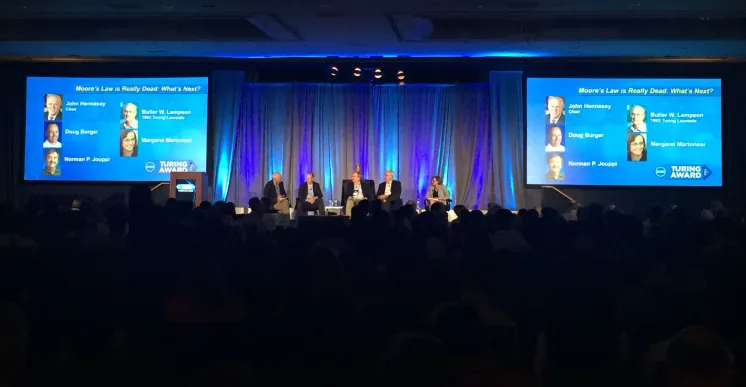
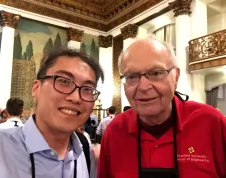
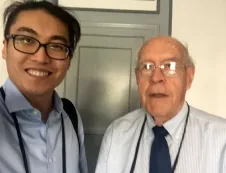

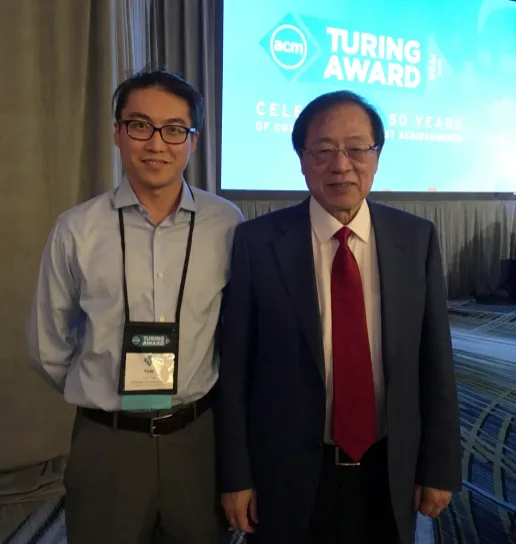
Rashika Mishra, Ph.D. Candidate, selected to compete in the 2-day VMWare Codehouse Hackathon

Over the summer, Rashika Mishra, a Ph.D. Research Assistant under Dr. Ovidiu Daescu’s supervision was selected to compete in the 2-day VMWare Codehouse Hackathon in Palo Alto, California. Rashika joined 20 other likeminded female students who were ready to team up to make an impact and tackle a technical challenge aimed at giving back to the community. Rashika and her team declared the winner of the 2017 VMWare Codehouse with their 2-player web based game called TurtleCode. We asked Rashika to write about her experience participating in the hackathon.
This summer, I had the amazing opportunity to compete in the 2-day VMWare Codehouse Hackathon in Palo Alto, California. I learned about this Hackathon through university recruiting team at VMWare and decided that this was an opportunity that I could not pass up. The hackathon itself is a three-day technical experience created for women pursuing their Master’s and Ph.D. in Computer Science. Twenty students were selected through a coding challenge out of more than 100 applicants. Five teams were formed out of the 20 students that were selected.
This year’s theme was to develop a web application to help increase diversity in tech by addressing barriers that contribute to the lack of diversity. My team was named World of Code. I worked with Venkata Jyothsna Donapati from Stony Brook University, Michelle Ahn from UC Berkeley, and Radhika Somthankar from CMU. We developed a 2-player web based game called TurtleCode. This game was designed to teach logic to young kids with the help fin animations, story lines, and a block puzzle game. The game prototype was designed to teach two famous algorithms, “Finding the largest number” and “Bubble sort.”
The idea behind this game was to expose kids to technology and logic at a very young age with an easily accessible game. We wanted to handle diversity from the roots by bringing millions of gen-next kids into the world of technology and fight the stereotype threat.
The other ideas developed at the Codehouse by other teams included a Career Assessment Tool, a mentoring and connection platform, and a Career Book.
After the development of our application, we were asked to present our ideas to some of the department heads at VMware as a sales pitch. My team was declared the winner of the 2017 VMWare Codehouse.
Overall, the entire experience of working together with a group of smart women to build something significant was not only rewarding, but it also left a meaningful impact on me and has inspired me to continue to do great things with my research. It was amazing to able to meet other women from other universities who were also passionate about technology. I would urge students to take advantage of applying and competing in hackathons as a means to further their computer science education, network, as well as to challenge themselves.
More information on the hackathon can be found by clicking here.
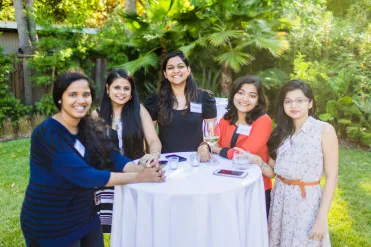
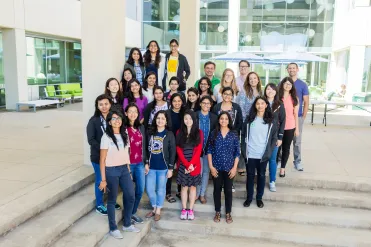
ABOUT THE UT DALLAS COMPUTER SCIENCE DEPARTMENT
The UT Dallas Computer Science program is one of the largest Computer Science departments in the United States with over 2,400 bachelor’s-degree students, more than 1,000 MS master’s students, 150 Ph.D. students, 53 tenure-track faculty members and 38 full-time senior lecturers, as of Fall 2017. With The University of Texas at Dallas’ unique history of starting as a graduate institution first, the CS Department is built on a legacy of valuing innovative research and providing advanced training for software engineers and computer scientists.




